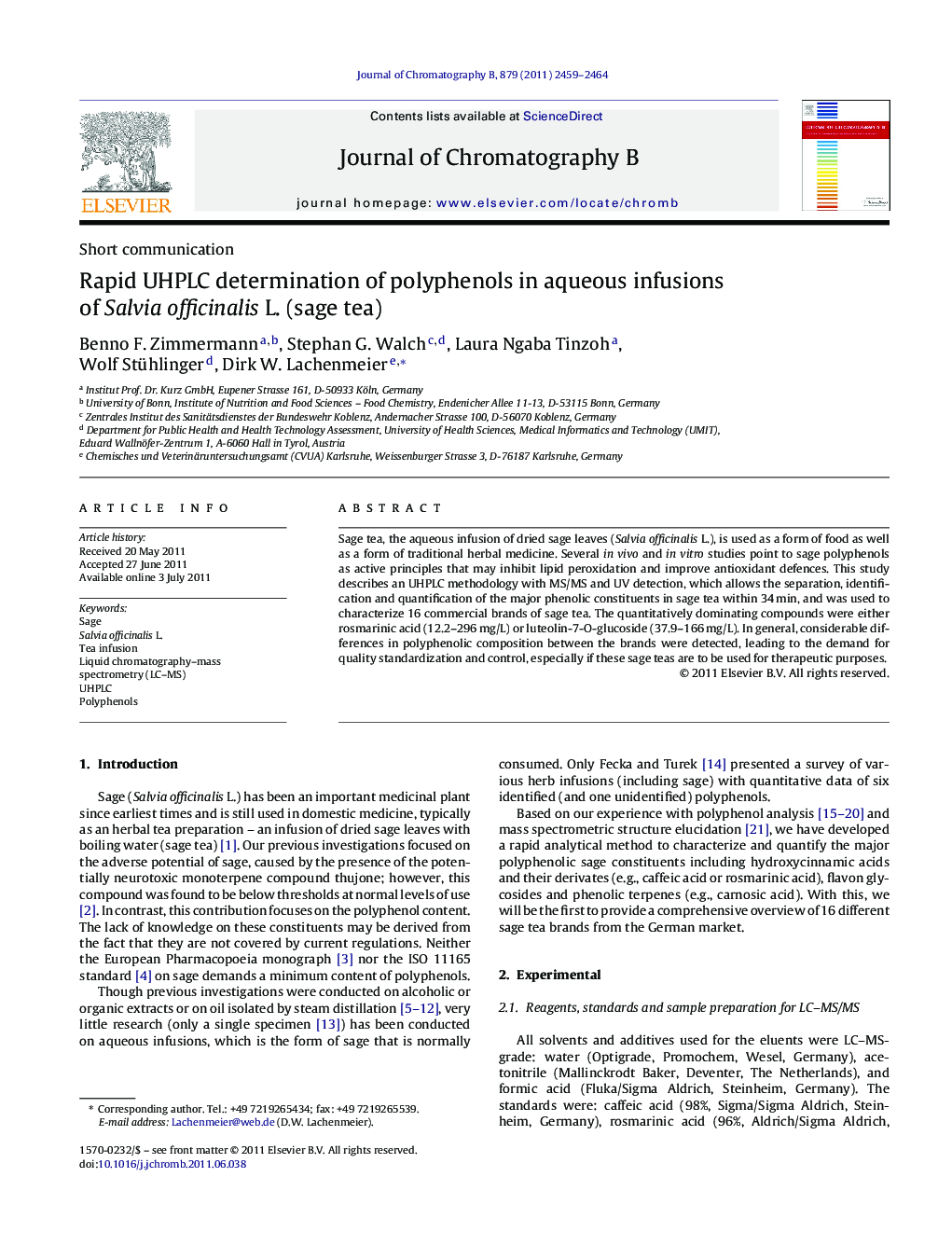| Article ID | Journal | Published Year | Pages | File Type |
|---|---|---|---|---|
| 1213325 | Journal of Chromatography B | 2011 | 6 Pages |
Sage tea, the aqueous infusion of dried sage leaves (Salvia officinalis L.), is used as a form of food as well as a form of traditional herbal medicine. Several in vivo and in vitro studies point to sage polyphenols as active principles that may inhibit lipid peroxidation and improve antioxidant defences. This study describes an UHPLC methodology with MS/MS and UV detection, which allows the separation, identification and quantification of the major phenolic constituents in sage tea within 34 min, and was used to characterize 16 commercial brands of sage tea. The quantitatively dominating compounds were either rosmarinic acid (12.2–296 mg/L) or luteolin-7-O-glucoside (37.9–166 mg/L). In general, considerable differences in polyphenolic composition between the brands were detected, leading to the demand for quality standardization and control, especially if these sage teas are to be used for therapeutic purposes.
